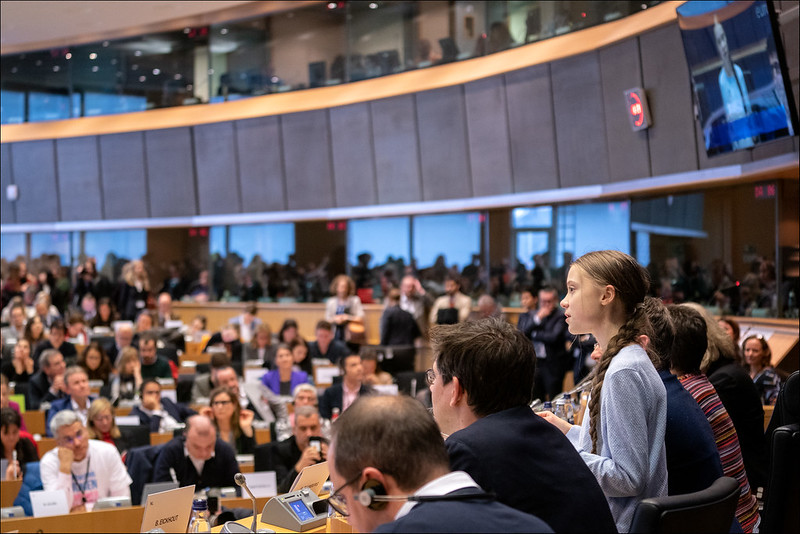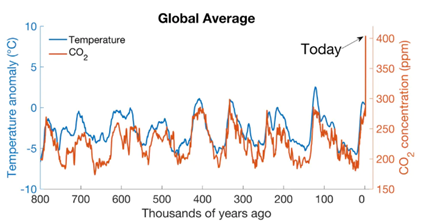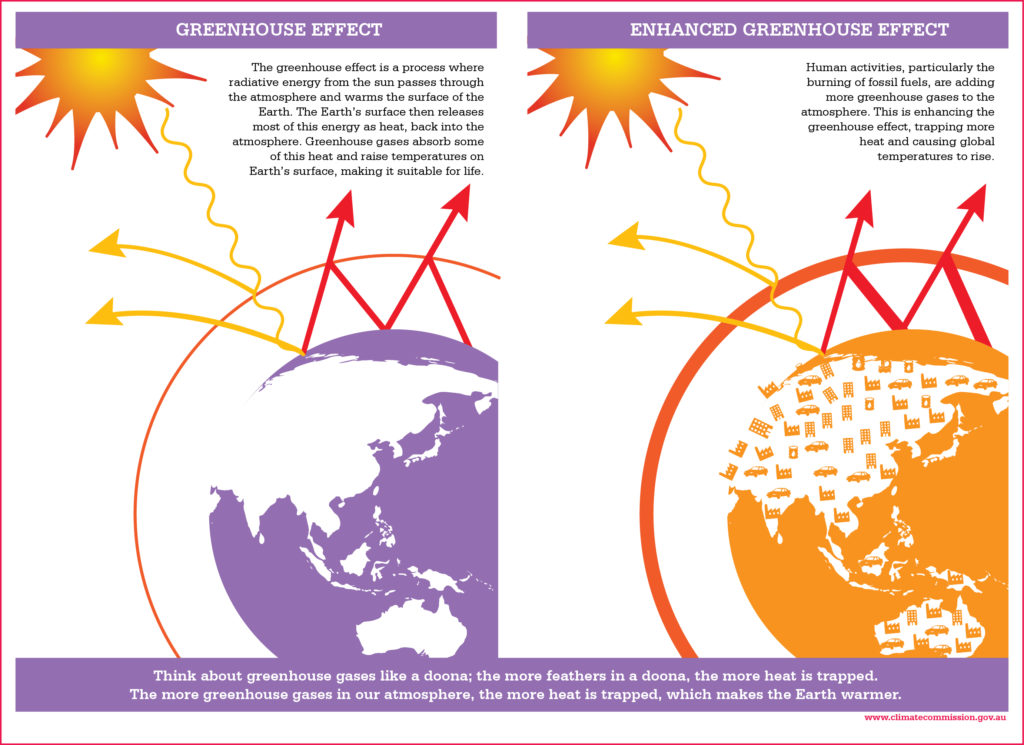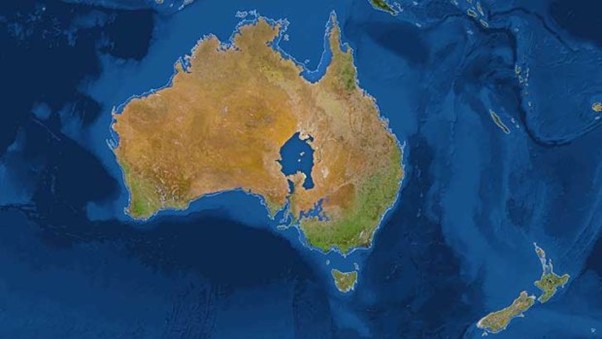St Mary's College Year 10 Science

Hey there St Mary's Year 10 Science class!
Thank you for your questions about climate change. You asked some really interesting questions about impacts of climate change, the future of our Earth, protests and taking action at home.
You'll find answers to your questions from our climate experts below - have a read and watch their answers.
You can also have a look at what other classes across Tasmania asked this year, as well as our climate change toolkit.
Our Questions
This is an excellent question, and one of the questions most students want an answer to. You can be someone who takes climate action!
Each of us can act individually (on our own) and collectively (together with others) to act on climate. We know, from scientific evidence, that climate change cannot be stopped and is happening already – but it can be reduced and slowed down. People today and into the future (including you) can make changes and decisions that will greatly reduce climate change and its impacts.
Some of these decisions are happening on a systemic scale - they the really big changes we need to reduce emissions from industries and electricity generation.
For example, world leaders are meeting together at COP26 (which is the UN Climate Change Conference of the Parties) to discuss pathways to do this – in particular, to ensure that global temperature rises do not exceed 1.5 degrees, and how we can adapt to climate change impacts into the future. If we can manage to greatly reduce global greenhouse gas emissions (such as carbon dioxide) we can limit climate change.
You might wonder how young people can influence big changes like this? By using your voices! Young people are involved in many groups and movements such as the School Strikes for Climate that have already made a difference to the way world leaders think about climate action.

At a smaller scale, all of us can do something to make positive changes and have an impact on tackling climate change. Some people can do more and less than others, and that is OK - it’s great actually because lots of small changes can lead to big impact. In everyday life, there’s lot that you might be able to do, for example:
- You can aim to take the bus or walk, or ride your bike to school more.
- You could eat more vegetables, and eat meat less often (maybe even encourage your family and friends to have ‘meat free Mondays’?!). Plant-based foods generally produce fewer greenhouse gas emissions and they also require less energy, land, and water usage.
- You can speak up! Tell your friends and family about climate change and the small changes each of us can do to make a difference - remembering that we all have different abilities to make these changes, big and small.
There are a lot more ideas you can check out on our 'What can I do?' page.
I received quite a few questions asking about the most effective way to stop climate change, and how kids can be part of the solution. As you probably know, the key thing that we need to do to help stop climate change is to stop emitting greenhouse gases – particularly carbon dioxide and methane. There are things we can all do to help with this, like driving less, using renewable energy, or tyring to eat local produce that doesn’t have to be transported to Tasmania from far away. But for the really big changes to greenhouse gas emissions that are required to help stop climate change we need our governments to implement policy change. The more we all call for these changes – as a community – the stronger our message to politicians will be.
Another thing we will need to do to help stop climate change is to actively remove carbon dioxide from the atmosphere. There are lots of ways to do this, but some of the simplest and most effective are those that harness the power of nature. Planting more trees, leaving coastal and marine habitats like mangrove forests, seagrass meadows and kelp forests intact. If you’re interested in engineering then there are also some very cool technologies emerging that will help us to pump carbon dioxide out of the atmosphere and back under the ground.

The future of Tasmania and of our planet belongs to kids of today, not to grown ups. Kids ask great questions and they are fantastic at thinking up new ways to solve problems. I think that one of the most important things that kids can do is to keep asking questions and to keep learning to be problem solvers. Keep being curious and caring about climate change!
Climate change and its causes will affect your generation in many different ways, in Australia and elsewhere. These include rising average temperatures, more frequent and severe storms, floods and bushfires, and extinction of plants and animals. The loss of topsoil from drought, flood and wind and unpredictable weather will affect farming and could cause more frequent and severe famines. This could lead to increasing political tensions in some countries around access to resources. People and governments will need to spend more money on safety and preparedness. These impacts are all related to one another.

A lot of produce will become more expensive as environments change. This includes coffee and honey, and even some vegetables, fruits and meat. Campfires, burn-offs and open-flame barbeques would be restricted for longer parts of the year as fire bans become increasingly common. Take the example of the 2020 bushfires. More than 3 billion animals were impacted, forests were damaged or destroyed, and human tragedies included loss of life, health, homes and livelihoods. Crises like this would be repeated in increasingly worse fire seasons, meaning bigger and bigger expenses for fire preparedness. Taking action on climate change will not stop these impacts entirely, but it can reduce them.
Climate change and its causes impact more than the natural environment. They have knock-on impacts in health. Air, water and soil pollution will continue to cause health conditions and worsen existing ones like cardiovascular and respiratory diseases as well as cancers. While these outcomes are less common in Australia, they happen here too. People in poorer communities with fewer support structures are impacted most. Your generation will see these impacts in your lifetimes. In fact, you already have. Increased exposure to new infectious diseases in the environment has also been linked with climate change, meaning epidemics and pandemics may be a thing of the future and not just the present.
While these impacts cannot be stopped completely, there is so much that can be done to avoid the worst of it. If we rapidly reduce the greenhouse gas we emit, we can improve the future for your generation and the generations who follow you. Action on climate change now will play an important part in your future quality of life, and in the lives of many others around the world in your lifetime.
The climate was always changing, but it is important to understand that there is a big difference between natural climate change (or climate variability) and climate change due to human activities.
Natural climate change
Past natural climate changes have led to the extinction of many species, caused populations to migrate, as well as large changes to land temperatures, the amount of carbon dioxide and other greenhouse gases in the atmosphere, and ocean currents. In the last 800,000 years, for example, the Earth has gone through seven glacial cycles (ice ages), where the Earth was much cooler than today with expansive ice sheets covering much of the globe. At the end of each of these, the climate warmed, in some cases to warmer temperatures than today. The timing of these cycles is mostly controlled by slow changes in Earth’s orbit, which alter the way the Sun’s energy is distributed around the Earth.
Human-caused climate change
Humans have always affected and modified their environment but over the last 200 years, however, human activities have increasingly overridden natural climate processes, and since at least the middle of the 20th century, the warming we are seeing is undeniably a result of human activities. Our actions are causing rising carbon dioxide concentrations to levels higher than at any time in at least the last 800,000 years (see figure below), and rising temperatures in the atmosphere, ocean and on land are at a scale and rate never seen before. This is leading to the increasing frequency and intensity of extreme events such as bushfires, cyclones, heatwaves, floods and droughts we are experiencing.

The how and the why of climate change are very tightly linked, so tightly linked people as far back as 1896 had figured out the basics of how it works. Earth’s atmosphere keeps the world warm by trapping heat. It does this in a way similar to the way a greenhouse works (thus the name “greenhouse effect”). Sunlight (and warmth) can come through the atmosphere in the day time and warms up the land and sea areas. At night cooling occurs, with the heat escaping into the atmosphere, some of that leaks out into space again, but not all because the atmosphere traps some of the heat. The key bit of the atmosphere that traps the heat are the greenhouse gases.

Natural greenhouse gases are water vapor, carbon dioxide, methane, ozone and nitrous oxide. These chemicals are an important part of the world’s natural cycles. They cycle between the atmosphere, the ocean, soils and rocks. Human activities have changed those cycles, meaning more greenhouse gases have entered the atmosphere, trapping more heat and leading to global warming and climate change.
Many human activities influence climate relevant cycles, but two of the most important are to do with carbon dioxide and methane. Fossil fuels contain carbon dioxide locked up millions of years ago, by bringing it to the surface and burning the fossil fuels human activity short circuits natural weathering and other cycles, creating one of the major sources of the excess carbon dioxide that is creating climate change.
Agriculture is also a major contributor to climate change, producing about a quarter of all current greenhouse gas emissions. These emissions come from the fuels used by farmers, but also because of emissions from rice paddies and livestock, which produce methane. A particularly powerful greenhouse gas, over a 20-year period methane is 80 times more potent at warming than carbon dioxide. On top of this, the removal of native vegetation, like forests, to create space for agriculture reduces the amount of carbon drawn out of the atmosphere and stored in trunks and roots as trees grow (known as sequestration).
As you can see there are many interconnected ways that human activities are influencing the biogeochemical cycles of Earth and thereby contributing to climate change.
Good sources of climate information are https://climate.nasa.gov/ and the new IPCC climate atlas https://interactive-atlas.ipcc.ch/
Two good Australian information sources are the CSIRO https://www.csiro.au/en/research/environmental-impacts/climate-change/Climate-change-QA and the Academy of Science https://www.science.org.au/education/immunisation-climate-change-genetic-modification/science-climate-change
You might also like to play with the simple climate model at en-Roads, explore options for reducing climate change https://en-roads.climateinteractive.org/scenario.html?v=21.10.0
This is a great question! The recent IPCC report (from the Intergovernmental Panel on Climate Change – which includes experts from Tasmania!) tells us that collectively, we will need to act fast to make changes to limit global warming to 1.5°C in the next decades. If we can manage to greatly reduce global greenhouse gas emissions (such as carbon dioxide, or CO2, by driving less or by burning less fossil fuels like coal) we can limit climate change. Most likely, it could take 20-30 years to see global temperatures become stable.
To help have quick and large impact, we need to take action at individual, collective and systematic levels:
At an individual level, each of us can do things like:
- Aim to take the bus, or walk or ride your bike to school more instead of travelling by car.
- Eat more vegetables and less meat (maybe even encourage your family and friends to have ‘meat free Mondays’?!) Plant-based foods generally produce fewer greenhouse gas emissions and they also require less energy, land, and water usage. Or try to eat more local food that hasn’t need to come from far away, which is a fun way to try new food and get to know Tasmanian food producers at your local farmer’s market!
- Speak up! Tell your friends and family about climate change and the small changes each of us can do to make a difference - remembering that we all have different abilities to make these changes, big and small.
But remember that this will require more than just individual action. And whilst reducing emissions is a good thing, if we completely stopped emitting CO2 tomorrow, there wouldn’t be enough energy to generate electricity, or for us be able to travel and bring people and food to places around the world. That means we need to change our systems (like the ways we transport things, and make electricity) so that we can live without needing to use fossil fuels.
As you’ve outlined in your question, we need to work together to achieve these kinds of system changes to take action on climate. Using our voices to demand change is also a really important thing we can do. Find out more things we can all do on the 'What can I do?' page.
This is a great question! The recent IPCC report (from the Intergovernmental Panel on Climate Change – which includes experts from Tasmania!) tells us that collectively, we will need to act fast to make changes to limit global warming to 1.5°C in the next decades. If we can manage to greatly reduce global greenhouse gas emissions (such as carbon dioxide, or CO2, by driving less or by burning less fossil fuels like coal) we can limit climate change. Most likely, it could take 20-30 years to see global temperatures become stable.
To help have quick and large impact, we need to take action at individual, collective and systematic levels:
At an individual level, each of us can do things like:
- Aim to take the bus, or walk or ride your bike to school more instead of travelling by car.
- Eat more vegetables and less meat (maybe even encourage your family and friends to have ‘meat free Mondays’?!) Plant-based foods generally produce fewer greenhouse gas emissions and they also require less energy, land, and water usage. Or try to eat more local food that hasn’t need to come from far away, which is a fun way to try new food and get to know Tasmanian food producers at your local farmer’s market!
- Speak up! Tell your friends and family about climate change and the small changes each of us can do to make a difference - remembering that we all have different abilities to make these changes, big and small.
But remember that this will require more than just individual action. And whilst reducing emissions is a good thing, if we completely stopped emitting CO2 tomorrow, there wouldn’t be enough energy to generate electricity, or for us be able to travel and bring people and food to places around the world. That means we need to change our systems (like the ways we transport things, and make electricity) so that we can live without needing to use fossil fuels.
As you’ve outlined in your question, we need to work together to achieve these kinds of system changes to take action on climate. Using our voices to demand change is also a really important thing we can do. Find out more things we can all do on the 'What can I do?' page.
One of the many fascinating and wonderful things about our planet Earth is that its climate is always changing. For literally billions of years, life on Earth has been influencing the planet’s changing climate. In fact, ancient microbes caused Earth’s first ever global warming. The earliest photosynthetic microorganisms belched out enough methane to warm the planet by 15°C. This bout of global warming may have saved Earth from freezing over and created a comfortable climate for early organisms. Other climatic changes in the Earth’s history have been triggered by the changing configuration of continents and oceans, changes in the Sun’s intensity, variations in the orbit of Earth, and volcanic eruptions.
Climate change resulting from recent and current human activities is happening much faster than it ever has before, which means that many species (including humans) are struggling to adapt to the impacts of climate change. If humanity can meet its targets for reducing greenhouse gas emissions then we can slow and even reverse the current warming trend.
So while the Earth’s climate has always been changing over very long timescales – such as glacial and inter-glacial periods – and it will continue to do so, humanity does have the power to fix the current warming trend through global action to reduce greenhouse gas emissions.
One of the many fascinating and wonderful things about our planet Earth is that its climate is always changing. For literally billions of years, life on Earth has been influencing the planet’s changing climate. In fact, ancient microbes caused Earth’s first ever global warming. The earliest photosynthetic microorganisms belched out enough methane to warm the planet by 15°C. This bout of global warming may have saved Earth from freezing over and created a comfortable climate for early organisms. Other climatic changes in the Earth’s history have been triggered by the changing configuration of continents and oceans, changes in the Sun’s intensity, variations in the orbit of Earth, and volcanic eruptions.
Climate change resulting from recent and current human activities is happening much faster than it ever has before, which means that many species (including humans) are struggling to adapt to the impacts of climate change. If humanity can meet its targets for reducing greenhouse gas emissions then we can slow and even reverse the current warming trend.
So while the Earth’s climate has always been changing over very long timescales – such as glacial and inter-glacial periods – and it will continue to do so, humanity does have the power to fix the current warming trend through global action to reduce greenhouse gas emissions.
Over time, if we do nothing to slow or reverse climate change, the average Earth temperature could rise by 8 degrees Celsius or more! This would eventually cause changes so profound that if you were an astronaut orbiting our planet, you’d be able to clearly see with your eyes the changes from space. This is ironic because the pollution we are creating that is causing the Earth to warm (mostly carbon dioxide, but also methane and other ‘greenhouse’ gases) is largely invisible. That means we can’t actually look up into the sky and see how this pollution is building up in our air – but watch this clever video that let’s you see how quickly carbon dioxide builds up in just one city (New York) from our everyday human activities! The main reason why climate is changing is that the pollution created from burning petrol, gas and coal to generate energy for humans is making our atmosphere increasingly effective at trapping energy from the sun on our planet at night rather than letting it escape back into space (see picture below). It is like each new year’s worth of pollution is adding more and more blankets to our atmosphere – gradually overheating the Earth.

Imagine that you are an astronaut orbiting the Earth. How does the Earth look now? And how would what it looks like change by 2050 if we do nothing to slow or reverse climate change? Let’s explore two examples.
One thing that really makes our earth stand out are its colours. Bright blue for the ocean, brown and greens for the land. And – at the north and south pole and surrounding areas (the polar regions) – bright white from the large areas of ice. The North Pole is surrounded by the Arctic Ocean so this ice is frozen sea water. The South Pole is actually on land (in Antarctica) so this ice is frozen fresh water. In fact, 70% of the world’s fresh water is frozen in ice sheets and glaciers! What happens to ice when the water or air around it gets warmer? It melts, of course! You can try this at home. Put an ice cube in a glass. Time how fast it melts when left at room temperature versus heated in the microwave, or when put in cold versus hot water. So far, the average earth temperature has risen by about 1.2 degrees Celsius and ice is melting at a rapidly increasing rate in both the Arctic and Antarctica. If the average Earth temperature rises by 8 degrees or more, from space you would notice that the white icy areas around the poles would drastically shrink in size. In the Arctic, they’d turn dark blue (what water looks like from space). In the Antarctic, they’d turn brown or green (land). See before and after pictures of this here. What does ice turn into when it melts? You got it – water! What do you think would happen to the oceans if more and more water gets added to them? The sea level will have to rise, of course. This means that land areas around coastlines that are currently not very high above sea level would end up under water. By 2050, this could include many of the world’s largest cities like Jakarta in Indonesia, Lagos in Nigeria and even New York City! And spare a thought for small island nations around the world who currently live less than 1 metre or so above sea level – their homes would completely disappear. What would this mean for you and where you live in Australia (see example below if all ice on earth melted)?
Find out what it means for you and where you live- put in your address and see whether your house would flood under different levels of sea level rise here. From space, if you could close your eyes and see 2022 and then close them again and see 2050, you’d notice that the shape and size of the land areas of Earth would change – smaller land areas and more ocean. Less brown and green and more blue.
These changes to how the Earth looks (less white due to ice loss at the poles, more blue and less brown as sea levels rise) are dramatic by themselves but also have further consequences for global weather especially extreme events like drought, floods, bushfire, heat waves and storms, which you can explore yourself or with your teachers.
If this makes you anxious, please know that people all over the world are working as hard as possible to convince leaders to act to slow and reverse climate change. It’s not too late to change the ending to this story. For example, 2,629 kids from 33 countries drew pictures of trees as a way to help cool the earth and a tree was planted for each of them. A giant banner of these drawings is being filmed at schools and in forests all over the world (https://www.kidscareaboutclimate.org) and a video of this will be shown at COP27 in the Australian Pavilion during the United Nations climate change meeting this month!!














